
The BNC Challenger S125 is aimed at the utility side of the Indian electric vehicle (EV) market, but can it make its mark? We spend some time with it to figure that out
Story: Sayantan De
Photography: Kalidas M
BNC is a relatively new entrant into the Indian EV space, having been founded in 2019. The BNC Challenger is the firm’s first product in the market. Instead of being yet another electric family scooter manufacturer, BNC has decided to opt for a different path, focusing on the more utilitarian segment of the market. However, customers are more demanding in that segment as well and they seek value for money above all else. Does the BNC Challenger have what it takes to challenge the established players? We spend some time with it to find out if the Challenger can live up to its name.
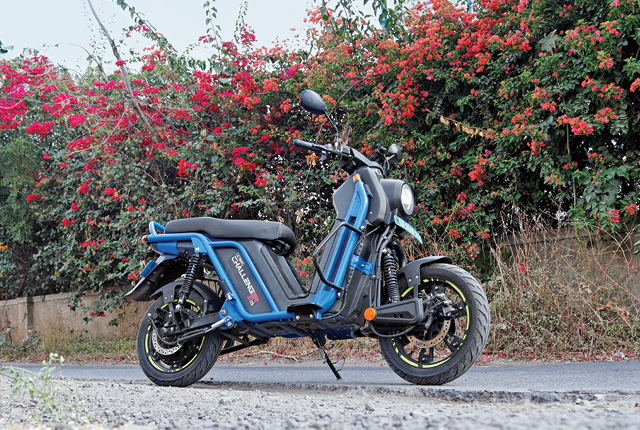
The BNC Challenger looks like it was built to withstand the variegated surfaces we traverse in our country, which are sometimes referred to as roads. The exoskeletal frame is the colourful element in the design, coming in a variety of primary shades, with everything else finished in a sobering matte black. It follows the function-over-form philosophy, which lends a refreshing touch of honesty to its design. The wheels are large, which make the proportions of the two-wheeler quite handsome in a rugged sort of way. I also really like the way the turn indicators and the tail-light have been integrated into the frame rails.
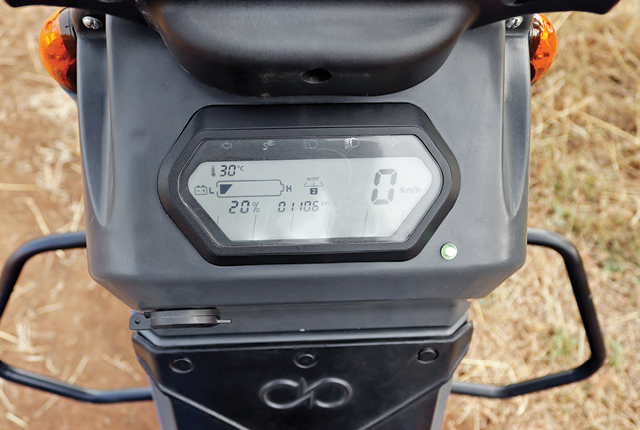
Being utility-focused, the BNC Challenger does away with most of the frills seen on other electric two-wheelers. There’s a simple LCD screen which relays the relevant information to the rider, along with a row of warning lights above it. It is really legible, even in direct sunlight, thanks to the angle it is mounted at. One irritant was the two keys, though: one for ignition and the other for storage. BNC should be able to figure this out; I can’t think of another new vehicle that requires two different keys to operate. Also, its external charging port, which is incapable of locking the charging cable in when turned on, leaves it open to miscreants who can simply unplug the charger while the vehicle is plugged in. That said, there’s a mobile application which conveys vital information like SOC and odometer reading to the owner.
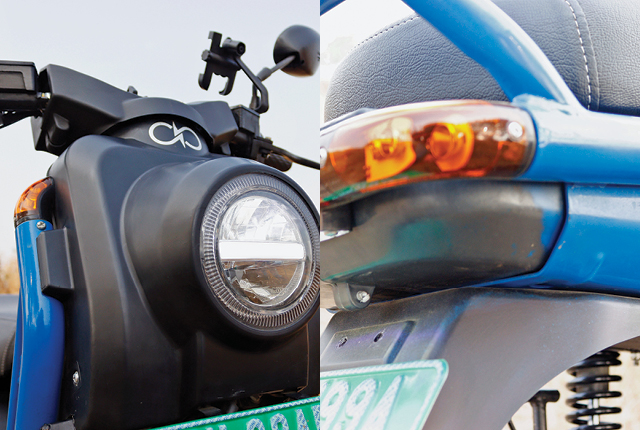
Also, while the BNC Challenger does feel robust, the fit-and-finish levels need some further improvement, as there are much more affordable vehicles available in the market with better finish. The ergonomics were absolutely spot on, though, as I got it checked by people of many different heights, all of whom found the sitting position comfortable. I must also mention the seat itself which has just the right balance of cushioning and firmness and there was no soreness even after being in the saddle for long stretches.
The BNC Challenger sports a three-kW (four-hp) hub-mounted motor, which draws the current from two removable LFP batteries, each with a capacity of 2.1 kWh. The batteries contain the same charging port, so they can be charged externally using the same charger. BNC claims a range of 180 kilometres in Eco mode, but we were not able to verify that, the Eco mode being too slow and not really safe to use in fast-moving city traffic. We stuck to the City mode, which is what the Challenger boots up in, and got a respectable real-world range of 92 km on a single charge without any attempt to conserve power. The BMS could be better, though, as it never actually went down to zero; instead started losing power from four per cent and lost all motive force when it dropped below two. It took about seven-and-a-half hours to fully charge the battery.
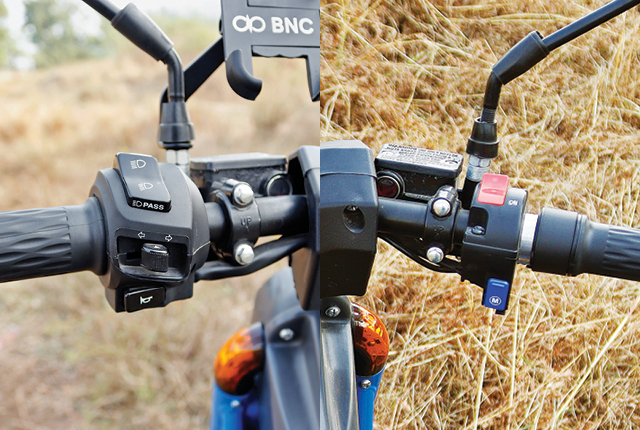
Furthermore, after charging, it was not ridden for two days and it lost four per cent charge each day; thus, on the third day, it was at 92 per cent. We informed BNC about this unusually high charge loss and they assured us that they were looking into this. Also, at one time we stopped charging at 60 per cent and then, after a few hours, we reconnected the charger, but the battery refused to charge until we cycled the battery from charge to discharge for about one per cent, after which it started charging promptly.
The BNC Challenger’s suspension set-up comprises a leading-link Earls Fork that utilises the same shock-absorber units as the ones at the rear. This results in the front units having the same preload adjustability instead of being non-adjustable telescopic forks. The other advantages of an Earls Fork are that they are inherently stronger and can carry more loads than conventional forks and they also have natural anti-dive properties as the front wheel rises up under hard braking.

On factory settings, the ride is really comfortable, both solo and with a pillion rider, and the Challenger just glides over poorer roads, no doubt aided by the 14-inch wheels at both ends. This comes at the cost of the handling, though, as the front end is vague and it can get away from you even at very low speeds if you try to tighten the radius of a U-turn by adding more lean. The braking was very good as it was equipped with disc brakes at both ends, though the rear has a tendency to lock up.
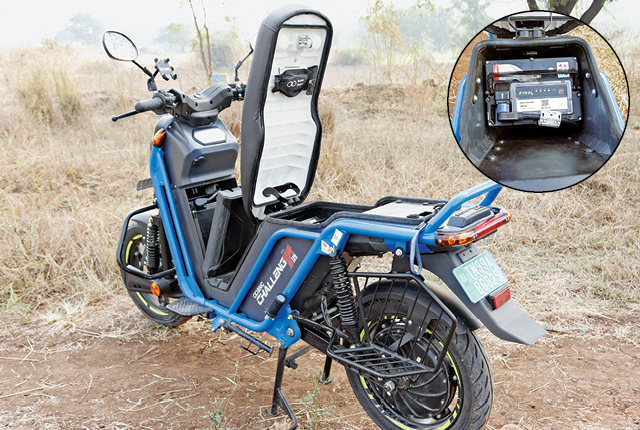
The BNC Challenger employs a few clever cost-cutting measures, like the aforementioned identical shock-absorbers at both ends, coupled with identical brake discs; even the wheels are two-piece units, with the rim being the same for the front and rear wheels and the flange and the hub motor mounted on the rims via bolts. This theme of duality continues with the batteries as well, but that’s where it hits one of the major problems. We were testing the S125 version of the Challenger that comes equipped with two batteries, which means there’s no usable storage space. BNC also makes a single battery-equipped version, called the S110, which, while having half the range, also has half the charge time and a large under-seat storage (we did check this out at the dealership).
Considering that the S125 costs Rs 1.45 lakh, as opposed to Rs 1 lakh for the S110 (both prices ex-showroom), it is hard to make a case for the S125’s existence with the S110 around, which is simply a more useful product.
The price also shocked quite a few onlookers when they enquired me about it. When I informed them about the S110, they all seemed to agree that if they were to buy it, they would indeed go for that version. However, the price is still a bit too high for the S110, which needs to be a bit less than where it is now and the general consensus of the prospective customers was in the region of Rs 80,000-Rs 90,000.
While the S125 may be difficult to justify, if BNC can bring down the price of the S110 a little, it should definitely find takers at the utility end of the market.
Read More: Ather 450 X updated

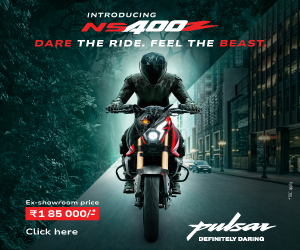
Leave a Reply